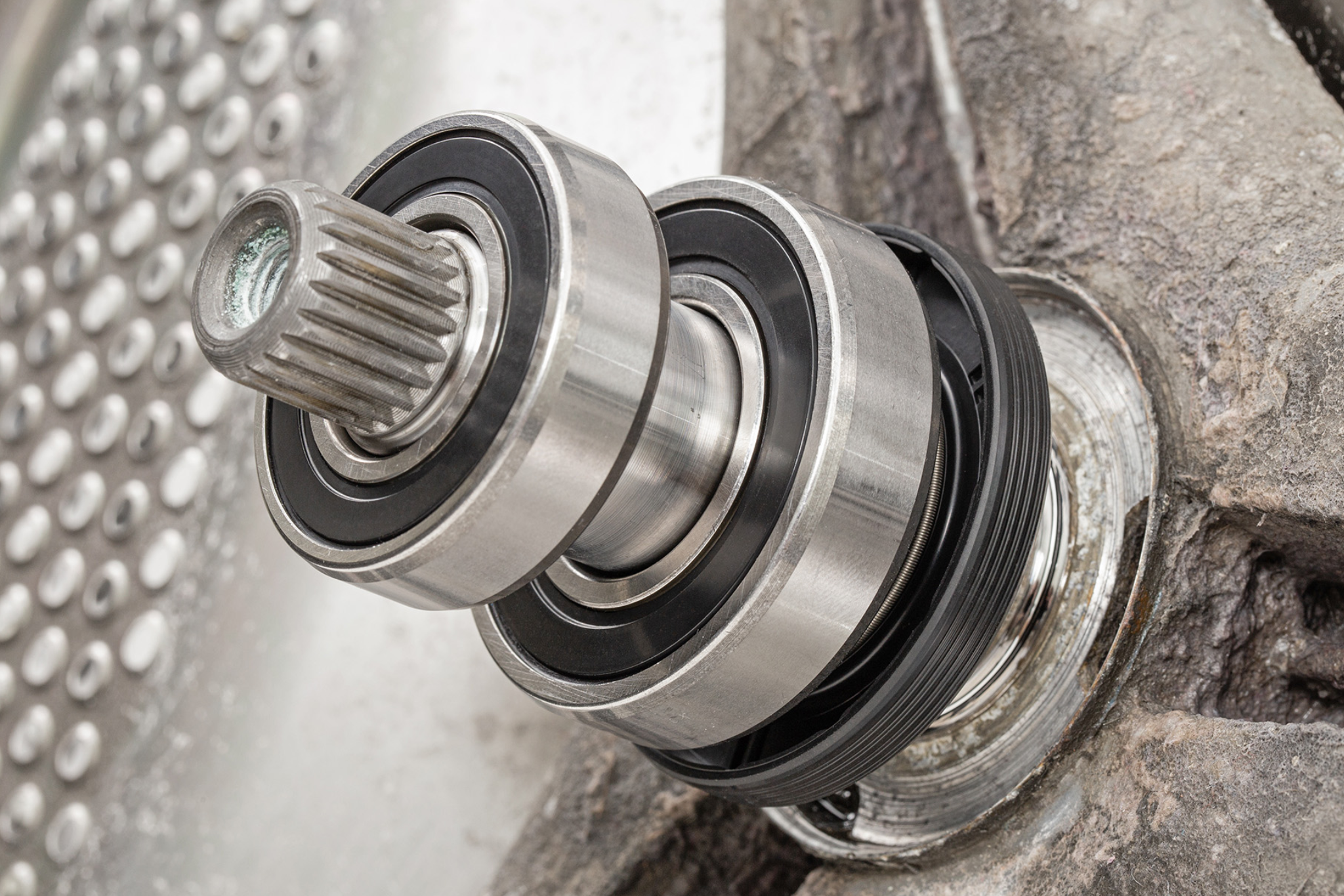
Washing machine bearings don’t last forever. They work silently behind the scenes, enabling your drum to spin smoothly through thousands of laundry cycles. But when they start failing, you’ll notice. And if ignored, worn bearings can cause damage to other components, leading to a much more expensive repair—or the end of your appliance altogether. Here’s how to recognize the signs, understand the timeline, and make smart, timely decisions about bearing replacement.
What Are Bearings, and What Do They Do in a Washing Machine?
Bearings are small, round metal components that sit behind the drum of your washing machine. Their main role is to reduce friction between the moving drum and the stationary housing. They allow the drum to spin freely and smoothly, even under the heavy load of wet laundry.
Washing machines typically have two bearings—an inner and an outer one—mounted inside a metal or plastic bearing housing. They are packed with grease and protected by a rubber seal. Over time, both the lubrication and seal wear out.
How Long Do Bearings Usually Last?
On average, washing machine bearings last between 7 to 10 years, depending on:
-
Frequency of use (daily use shortens lifespan)
-
Load sizes (overloading puts strain on bearings)
-
Water quality (hard water can degrade seals faster)
-
Build quality of the machine
Some high-end models with stainless steel bearing housings and superior seals may run trouble-free for over a decade. Cheaper machines or those exposed to moisture leaks might need bearing replacement much sooner—sometimes within 5 years.
Warning Signs That Your Bearings Are Worn Out
Most homeowners first notice the change in sound. Bearings don’t fail overnight; they gradually degrade, and your ears often pick it up before your eyes do.
Here are the most common indicators:
-
Loud rumbling or growling during the spin cycle
This is the classic symptom. If your machine sounds like a jet engine during spin, worn bearings are the likely culprit. -
Excessive drum movement
When bearings fail, the drum becomes less stable. If you push on the drum and it rocks or wobbles more than usual, this could be a sign. -
Black or brown marks around the seal
As grease leaks from the bearing housing, you may see discoloration near the back of the drum or on clothing. -
Burning smell or overheating
Failing bearings create heat from excess friction. This can lead to burning smells or, in extreme cases, motor issues. -
Leaking water from the back
When the bearing seal deteriorates, water can start to leak through and wash away the lubrication, accelerating damage.
Can You Keep Using the Machine When Bearings Are Failing?
Technically, yes—but it’s not wise. Continuing to run a machine with bad bearings risks:
-
Further damage to the drum shaft
-
Destruction of the bearing housing
-
Overheating of the motor
-
Possible water leaks that can damage your flooring
If you catch the issue early, replacing just the bearings may be enough. But if you delay, the repair could require a full drum assembly—or worse, a replacement machine.
Is Bearing Replacement Worth It?
It depends on three main factors:
-
Age of the machine
If your washer is under 5–6 years old and in otherwise good condition, repairing it makes sense. -
Cost of the repair vs. replacement
Bearing replacement by a technician typically costs $250–$500 CAD, depending on labor rates and parts availability. If your machine is nearing the end of its natural lifespan, this investment might not be justifiable. -
Type of washer
Front-load washers are more prone to bearing wear due to horizontal drum position. They’re also harder and more expensive to repair. Top-load washers, while simpler mechanically, can also suffer from bearing failure but are usually easier to service.
DIY or Professional Repair?
Replacing bearings is not a beginner repair.
It requires full disassembly of the machine, removal of the inner drum, and precise installation of new bearings and seals. You’ll also need:
-
A bearing puller or press
-
Proper sealant
-
Bearing grease
-
Mechanical skill and several hours
Unless you have the right tools and confidence, hiring a professional is the safer route. Incorrect installation can lead to premature failure.
Preventive Tips to Extend Bearing Life
Good habits go a long way in avoiding premature bearing failure. Follow these tips:
-
Avoid overloading the drum
Overloading adds weight and stress to the bearings. -
Use the right amount of detergent
Excess suds can break down seals over time. -
Leave the door open after each wash
This prevents moisture buildup, which can compromise bearing seals. -
Fix leaks immediately
Water seeping into the bearing assembly is one of the leading causes of failure. -
Use water softeners if you have hard water
This protects internal components from mineral buildup.
When to Replace vs. When to Walk Away
| Condition | Recommended Action |
|---|---|
| Machine under 5 years old with worn bearings | Replace bearings |
| Machine 7–10 years old, otherwise fine | Replace if cost-effective |
| Machine over 10 years, multiple issues | Replace the machine |
| You hear noise but aren’t sure | Get a diagnostic check |
| Technician quotes over 50% of replacement cost | Walk away |
Bearing failure isn’t the end of your washing machine’s life—but it is a serious warning sign. Early diagnosis and timely action can save you hundreds of dollars and prevent future headaches. Pay attention to the sounds your washer makes, watch for signs of strain or wobble, and act sooner rather than later. Whether you repair or replace, staying proactive puts you in control—and keeps your laundry routine running smoothly.



